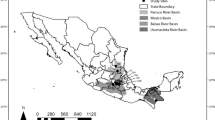Abstract
The life cycle of cyanobacteria Dolichospermum flos-aquae causing the blooming of waters of the boreal zone is studied. The mass propagation of the D. flos-aquae in the plankton stage occurs due to their ability to realize high biotic potential, defined by the combination of features developed during evolution, which the other partners of the plankton community lack. These include: adaptation to a certain growth temperature; low demand for nutrients; nitrogen fixation and intracellular accumulation of phosphates; and the ability of trichomes to migrate, allowing them to occupy the optimal parts of the euphotic zone for photosynthesis. It is established that the trichomes of D. flos-aquae consist of heterocysts and vegetative cells of different maturity, generosity, and activity during the planktonic stage, and their ratio changes throughout the life cycle of microorganisms. It is believed that the primary and secondary metabolites released by D. flos-aquae into the medium take part in the regulation of their own population growth, including cell destruction at the final stage of blooming, akinetes formation, and the simultaneous suppression in propagation of community partners. With the dominance of one species, the released toxic metabolites increase in years with an anticyclone type of weather, resulting in the reduction of species diversity and the simplification of the biotic community structure.
Similar content being viewed by others
References
Paerl, H. and Huisman, J., Climate change: A catalyst for global expansion of harmful cyanobacterial blooms, Environ. Microbiol. Rep., 2009, vol. 1, no. 1, pp. 27–37.
Nozhevnikova, A.N., Botchkova, E.A., and Plakunov, V.K., Multi-species biofilms in ecology, medicine and biotechnology, Microbiology, 2015, vol. 84, no. 6, pp. 731–750.
Branda, S., Vik, S., Friedman, L., and Kolter, R., Biofilms: The matrix revisited, Trends Microbiol., 2005, vol. 13, no. 1, pp. 20–26.
Paerl, H.W., Fulton, R., Moisander, P., and Dyble, J., Harmful freshwater algal blooms with an emphasis on cyanobacteria, Sci. World J., 2001, vol. 1, pp. 76–113.
Wiegand, C. and Pflugmacher, S., Ecotoxicological effects of selected cyanobacterial secondary metabolites a short review, Toxicol. Appl. Pharmacol., 2005, vol. 203, no. 3, pp. 201–218.
Ibelings, B.W., Backer, L.C., Kardinaal, W.E., and Chorus, I., Current approaches to cyanotoxin risk assessment and risk management around the globe, Harmful Algae, 2015, vol. 40, pp. 63–74.
Fedorov, V.D. and Kapkov, V.I., Rukovodstvo po gidrobiologicheskomu kontrolyu kachestva prirodnykh vod (The Manual for Hydrobiological Control of Natural Water Quality), Moscow: Mosk. Univ., 2000.
Tilman, D., Kiesling, D., Sterner, R., Keham, S., and Johnson, F., Green, blue-green and diatom algae: Taxonomic difference in competitive ability for phosphorus, silicon and nitrogen, Arch. Hydrobiol., 1986, vol. 106, no. 4, pp. 473–485.
Paerl, H.W., Nutrient and other environmental controls of harmful cyanobacterial blooms along freshwater-marine continuum, Adv. Exp. Med. Biol., 2008, vol. 619, pp. 216–241.
Paerl, H.W., Growth and reproductive strategies of freshwater blue-green algae, in The Ecology of Freshwater Phytoplankton, Reynolds, C.S., Ed., Cambridge: Cambridge Univ. Press, 1986, pp. 261–313.
Tilman, D., Plant Strategies and the Dynamics and Structure of Plant Communities, New Jersey: Princeton Univ. Press, 1988.
Havens, K.E., Cyanobacteria blooms: Effects on aquatic ecosystems, in Cyanobacterial Harmful Algal Blooms: State of the Science and Research Needs, Hudnell, H.K., Ed., New York: Springer-Verlag, 2008, pp. 733–747.
Kapkov, V.I., Likhacheva, N.E., and Fedorov, V.D., Functional strategies of blue-green algae and the blooming of water, Byull. MOIP, Ser. Biol., 2009, vol. 114, no. 3, pp. 411–417.
Margalef, R., Some concepts relative to the organization of plankton, Oceanogr. Mar. Biol. Ann. Rev., 1967, vol. 5, pp. 257–289.
Stomp, M., Huisman, J., Voros, L., Pick, F., Laamanen, M., Haverkamp, T., and Stal, J., Colorful coexistence of red and green picocyanobacteria in lakes and seas bacteria, Ecol. Lett., 2007, vol. 10, no. 4, pp. 290–298.
Waters, C.M. and Bassler, B.L., Quorum sensing cell to cell communication in bacteria, Ann. Rev. Cell Dev. Biol., 2005, vol. 21, pp. 319–346.
Author information
Authors and Affiliations
Corresponding author
Additional information
Russian Text © The Author(s), 2019, published in Vestnik Moskovskogo Universiteta, Seriya 16: Biologiya, 2019, Vol. 74, No. 1, pp. 19–26.
About this article
Cite this article
Kapkov, V.I., Vasilieva, S.G. & Lobakova, E.S. Growth of Toxic Cyanobacteria Dolichospermum flos-aquae (Anabaena flos-aquae) in the Waters of the Boreal Zone. Moscow Univ. Biol.Sci. Bull. 74, 15–20 (2019). https://doi.org/10.3103/S0096392519010036
Received:
Revised:
Accepted:
Published:
Issue Date:
DOI: https://doi.org/10.3103/S0096392519010036




